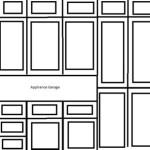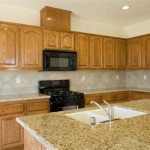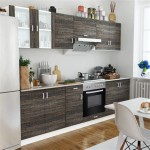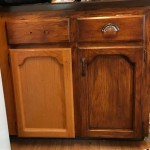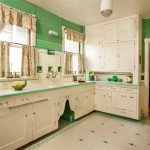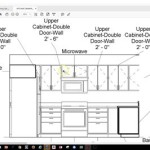What Is A Blind Corner Cabinet Used For In Kitchen Cabinets USA?
Blind corner cabinets, a common feature in many kitchen designs across the USA, address a specific challenge: maximizing storage potential in the often-awkward corners where two runs of cabinets meet at a right angle. These cabinets, characterized by their concealed or "blind" section accessible only from an adjacent cabinet opening, present both an opportunity and a design hurdle. Their effective use hinges on understanding their purpose, limitations, and the various hardware solutions designed to overcome accessibility issues. This article explores the functionality of blind corner cabinets in US kitchens, explaining their purpose, benefits, and the diverse range of organizational aids available to optimize their storage capacity.
The placement of kitchen cabinets is rarely a straight-line endeavor. Room dimensions, appliance placement, and desired work zones often necessitate turns and corner installations. These corners, if left unaddressed, can become dead spaces, representing a significant waste of valuable storage area. A standard corner cabinet, while functional, can still leave a significant portion of the corner inaccessible. This is where the blind corner cabinet steps in, extending further back into the corner space than a standard cabinet would, thus minimizing the wasted area and providing significantly more storage volume.
The primary function of a blind corner cabinet is to transform otherwise unusable corner areas into functional storage spaces. By extending deeper into the corner, these cabinets provide a larger overall storage volume compared to standard corner cabinets. However, this increased volume comes with the challenge of accessibility. Items stored in the "blind" portion of the cabinet are difficult to reach without specialized hardware or organizational strategies. The specific configuration of the cabinet, including its depth and the size of the opening, influences the type of items that can be stored effectively and the most suitable access solutions.
Maximizing Storage Volume in Inefficient Spaces
The core benefit of the blind corner cabinet is its ability to transform an otherwise inefficient space into a valuable storage asset. Kitchen designs, particularly in older homes, often feature layouts that create tight corners and awkward angles. Without a properly designed solution, these corners can become dead zones, essentially rendering the space unusable. A blind corner cabinet, by extending beyond the visible cabinet face and into the adjacent corner, effectively captures this wasted space, significantly increasing the overall storage capacity of the kitchen.
The increased storage volume offered by blind corner cabinets is particularly advantageous in smaller kitchens where every square inch of space is crucial. By maximizing the use of corner areas, these cabinets allow homeowners to store a greater quantity of kitchen essentials, reducing clutter and improving overall organization. This extra storage space can be used to house bulky items such as small appliances, pots and pans, or less frequently used kitchen gadgets.
The effectiveness of a blind corner cabinet in maximizing storage volume depends on careful planning and consideration of the items to be stored. While the cabinet itself provides a large storage area, its accessibility challenges must be addressed to ensure that the space is used efficiently. Choosing the right type of pull-out system or organizational accessories is critical to making the contents of the cabinet easily accessible and preventing the accumulation of forgotten items in the back corners.
Addressing Accessibility Challenges
While blind corner cabinets excel at maximizing storage volume, their primary drawback lies in the inherent difficulty of accessing items stored in the "blind" or hidden section. Reaching into the back of the cabinet to retrieve items can be awkward and inconvenient, often requiring the user to strain or remove other items in the process. This accessibility challenge necessitates the use of specialized hardware and organizational solutions designed to bring the contents of the cabinet within easy reach.
Several types of pull-out systems are available to address the accessibility issues of blind corner cabinets. These systems typically involve shelves or baskets that can be pulled out of the cabinet, bringing the contents forward for easy viewing and retrieval. Some systems feature independently moving shelves, allowing access to one section of the cabinet without disturbing the other. Other systems incorporate a pivoting mechanism that swings the entire contents of the cabinet out into the open, providing complete access to all stored items.
The choice of pull-out system depends on the specific needs and preferences of the homeowner. Factors to consider include the size and configuration of the cabinet, the type of items to be stored, and the desired level of accessibility. It is important to select a system that is durable, easy to operate, and capable of supporting the weight of the stored items. Professional installation is often recommended to ensure proper functionality and longevity of the pull-out system.
Beyond pull-out systems, other organizational strategies can also improve accessibility in blind corner cabinets. These include using tiered shelving to elevate items in the back of the cabinet, employing lazy Susans to rotate items for easy access, and utilizing storage containers with clear labels to identify the contents of each container. By combining these strategies with a well-chosen pull-out system, homeowners can effectively overcome the accessibility challenges of blind corner cabinets and create a highly functional and organized storage space.
Types of Blind Corner Cabinet Solutions
Several hardware solutions exist to mitigate the accessibility problems inherent in blind corner cabinets. These solutions vary in complexity, cost, and the level of access they provide. Understanding the different types of solutions is crucial for selecting the most appropriate option for a specific kitchen design and storage needs.
One common solution is the "blind corner pull-out." These systems typically consist of two or more shelves connected by a mechanism that allows them to be pulled out of the cabinet. As the shelves are pulled out, they often shift or pivot, bringing items from the back of the cabinet towards the front for easy access. These pull-outs are available in various designs, including those with solid shelves, wire baskets, or a combination of both.
Another popular option is the "lazy Susan" or rotating shelf. For blind corner cabinets, specialized multi-tiered lazy Susans are available. These systems often feature pie-cut shelves that fit snugly into the corner space. By rotating the shelves, users can easily access items stored at the back of the cabinet without having to reach or strain. These lazy Susans are particularly well-suited for storing smaller items such as spices, canned goods, or cookware.
A more complex but highly effective solution is the "magic corner" pull-out system. This type of system typically features two sets of shelves: an inner set that pulls out directly and an outer set that swings out to the side. When the system is fully extended, all shelves are accessible, providing complete access to the contents of the cabinet. These systems are known for their smooth operation and high weight capacity, making them suitable for storing heavier items such as pots, pans, and small appliances.
Finally, some homeowners opt for a simpler and more budget-friendly solution: adjustable shelving. By installing adjustable shelves in the blind corner cabinet, users can customize the storage space to accommodate items of different sizes. While this approach does not fully address the accessibility issue, it can improve organization and prevent items from getting lost in the back of the cabinet. The addition of pull-out boxes or baskets can further enhance the functionality of adjustable shelving.
The selection of the appropriate blind corner cabinet solution depends on various factors, including the budget, the available space, the type of items to be stored, and the desired level of accessibility. Careful consideration of these factors will ensure that the chosen solution effectively maximizes storage potential and improves the overall functionality of the kitchen.

Blind Corner Cabinets Step By Guide On How To Install

Blind Corner Base Cabinet Dimensions Ultimate Guide 2025

Blind Corner Accessories Info

How To Deal With The Blind Corner Kitchen Cabinet Live Simply Method

Blind Corner Cabinet Ideas To Maximize Space

How To Deal With The Blind Corner Kitchen Cabinet Live Simply Method

Ultimate Guide To Blind Corner Cabinets

Blind Corner Cabinets Step By Guide On How To Install

How To Deal With The Blind Corner Kitchen Cabinet Live Simply Method

Optimizing Blind Corner Cabinets American Wood Reface
Related Posts

